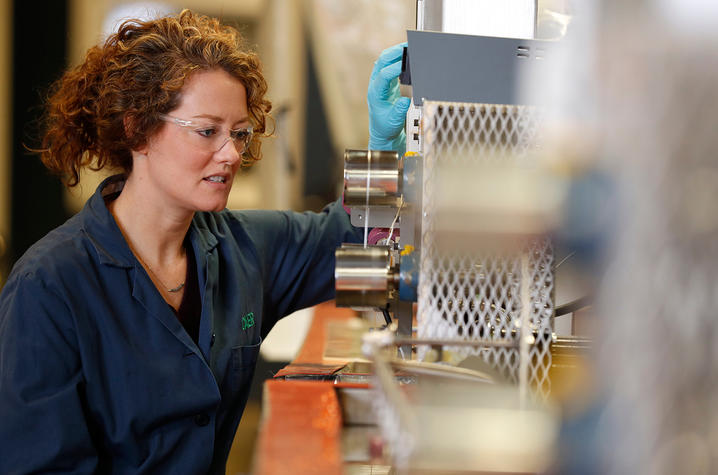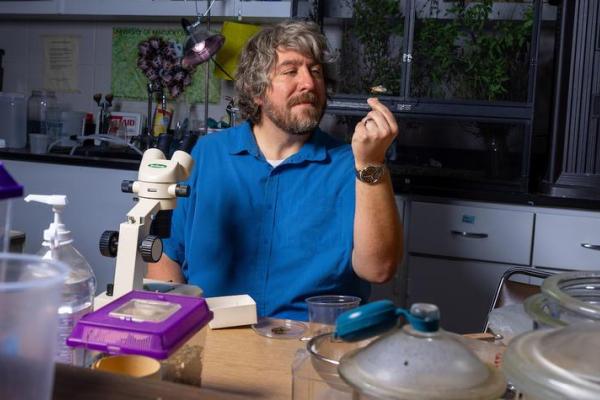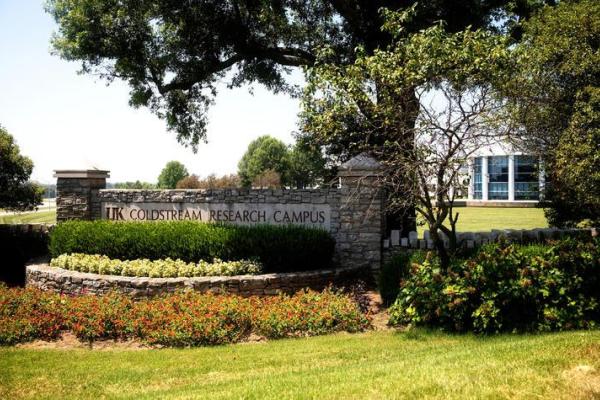New CAER Grant Seeks to Turn Coal Into Carbon Fiber

The University of Kentucky Center for Applied Energy Research (CAER) has received a U.S. Department of Energy (DOE) grant to transform coal tar pitch into high-value carbon fiber for use in aircraft, automobiles, sporting goods and other high-performance materials. The $1.8 million project includes DOE funding and industry and university cost-share.
CAER researchers and partners will be converting coal tar — a byproduct from coke production for the steel industry — into mesophase pitch, a liquid crystal, which can then be spun and thermally converted to carbon fiber. If successful, this new carbon fiber product could increase the value of coal tar pitch by five to 55 times of its current value, and find application in high stiffness, low-weight composites in applications such as passenger cars and light duty trucks.
“This is an exciting project for our research team,” said Matt Weisenberger, associate director for materials technologies at CAER and principal investigator on the award. “Being able to efficiently upgrade a coal byproduct into high-value carbon fiber for composites would be a terrific benefit to Kentucky’s and the nation’s manufacturers. It would add significantly to the coal value chain, further establishing Kentucky as a global leader in carbon fiber research and development.”
This grant will support development of simplified multifilament melt spinning of the mesophase pitch to produce "green" (not yet carbonized) fibers, and subsequent continuous thermal processing, or oxidization, of those green fibers. The CAER team will then create woven preforms from the fibers for composites manufacture, as well as chopped carbon fiber for filled thermoplastics suitable for injection molding.
As part of the project, CAER researchers will be working with two leading industry partners, Koppers Inc. and Materials Sciences LLC.
“This project is a perfect example of the work that interests us here at UK CAER,” said Rodney Andrews, the center’s director. “It will allow our carbon fiber researchers to potentially give new life to a coal byproduct. We are excited to be at the forefront of developing coal as a valued precursor for products. At the same time, this project also gives us an opportunity to work with industry leaders to develop solutions and new technology that can be taken into the marketplace. That has been a hallmark of UK CAER research.”
Home to the largest carbon fiber spinline facility at any academic institution in North America, UK CAER is a global leader in carbon fiber research, development and innovation. Carbon fiber composite is a stiff, lightweight alternative to aluminum and has become increasingly important to the aerospace and automotive industries. CAER carbon fiber researchers are working on vehicle lightweighting projects, including hollow carbon fiber development for pressure vessels for on-board hydrogen storage.
Credits
Dave Melanson (Center for Applied Energy Research)

